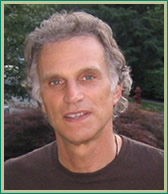
Why We Often Get What We Don't Expect
|
 |
|
| Adam Sokolow Senior Advisor |
If you search YouTube for the comedy skit “Stop It,” you’ll be entertained by Bob Newhart as a psychiatrist who tells Mo Collins to “Stop It” when she seeks his help in overcoming her irrational fear of being buried in a box. How many times have we been in a similar position, telling someone to stop eating so much because that extra weight creates extra risk of cardiovascular disease, or to stop smoking because cigarettes cause lung cancer. With an almost Zen-like directness, this skit cuts to the heart of the issue by simply saying, “Stop It!” Stop doing whatever you’re doing that’s bad for you. And we’re left wondering why people don’t simply do just that, and “stop it.”
The humorous twist of Newhart’s brilliant skit turns on our sense of reasonableness and economy of effort. It becomes immediately clear how much time and creative energy the patient is squandering by spinning her wheels and staying stuck in her rut. We can only imagine how much happier and more productive she’d be if she simply took “Doctor” Newhart’s advice to “just stop it.” However, she, like most of us, resists believing that the path to a happier life could really be that simple. But wouldn’t it be amazing if people, upon learning that something they’re doing is bad for them, quit doing the bad thing? So we are left with the question, Why? Why can’t things be that simple?
Obviously we are dealing with an entity that exists in all of us, which despite our better judgment is just not listening! It’s almost as if an obstinate stranger, lurking in the shadows of our psyche, is not amenable to persuasion. Well, there is such an entity; the great pioneering psychiatrist Carl Jung called that hidden part of us that causes so much trouble to ourselves and others our “shadow archetype.”
Jung recognized that just as all people have anatomical structures in common—we all have physical hearts and lungs and brains—we also have psychic traits in common, which he called the structural archetypes (or inborn tendencies) of our collective unconscious that predispose us to comprehend our world and behave in particular ways. Then we have our persona archetype, or mask, which serves a dual purpose: it is a projection of our cultivated positive image of ourselves, or our social identity, while at the same time concealing the darker or underdeveloped aspects of our personality (which resides in our shadow).
We also have a self-archetype, which positively integrates our personal sense of self within the larger context of society and the divine (in all the various ways people conceive of it). Then we have our anima (female) or animus (male) archetype, which is our idealized image of the opposite sex within our own unconscious that represents our true soul.
We also have our lower or animal soul—called the shadow archetype, which is capable of causing lots of trouble—and lastly we have a trickster archetype that is continually trying to drag our shadow archetype out into the light so it can be tamed and healed.
Jung believed that our life’s true goal is to live up to our maximum potential through “individuation,” which is the process of becoming a self-aware, productive person. Aspects of this process involve clarifying what we want to do and having the will power to accomplish it. Here is where our shadow archetype comes into play. For in order to fully express our will, we need to avail ourselves of our animal vitality, which resides in our animal soul. But this is where it gets tricky, because the power of our shadow archetype can be either constructive or destructive. Left on its own, it can act like a savage beast and become the wellspring of the seven deadly sins: wrath, greed, sloth, pride, lust, envy, and gluttony. Once it becomes integrated into the rest of the psyche, however, where it can be tamed and receive guidance from our higher self, the shadow archetype can undergo an altruistic transformation whereby it can direct its ferocity to accomplish truly positive results.
Integrating the shadow is not easily accomplished, as you may be gathering; we will often deny its very existence because it first shows up in its uncouth form in which it acts like a cunning, predatory, wounded animal. It’s quite understandable that we do not wish to acknowledge this unflattering part of ourselves that so thoroughly contradicts our persona’s positive self-image. We’re inclined to let this negative part of ourselves lurk in the shadows as a vague, inarticulate sense of foreboding. There it will try to deflect our attention by becoming a shape-shifting deceiver, which will actively point to something else in order to evade being recognized.
One of the shadow’s favorite tricks to avoid detection is to project our unresolved issues outwards onto others. This, by the way, is the source of all our prejudices, and why criminals often justify their own behavior by believing that the world is full of thieving scoundrels. So if we continue to let our shadow archetype evade our attention, it only gains increased negative power over us. The more we deny its existence because we lack the courage to acknowledge that this shadow is actually an unconscious part of ourselves—the part of us that never grew up because it never saw the light of day—the more it continues to fester out of sight and continually gains the power to cause trouble. It should now be clear that denying the shadow not only allows it to retain its primitive form, but also denies us access to its underlying power to accomplish really worthy things. For it is safe to say that anyone who has ever achieved greatness, for good or for ill, was accessing the power of their animal soul.
Fortunately, our higher self is not without the resources to help us heal. How? By ultimately integrating our animal soul or shadow archetype back within the rest of our psyche. To this end, our higher self invites the trickster archetype to our table, where it inevitably throws a monkey wrench at our persona’s carefully cultivated positive image. The trickster will drag our shadow in all of its naked ugliness out into the light when things don’t go our way. It pops our self-created deceptive bubble and lets us know that, “Ya got trouble, my friend, right here in River City,” by causing us to do the perfectly wrong thing at the perfectly right time! We will: leave home without our wallet; show up too late and can’t get in; forget to sign a crucial document on time; inadvertently blurt out what we never wanted anyone to know; make a wrong turn and up in the wrong place; utter inappropriate remarks; or keep ordering that triple chocolate volcano dessert! And we will keep on going maddeningly awry, repeating inappropriate behaviors that are guaranteed to cause us trouble and to elicit negative response in others, until we finally arrive at the moment where we find the presence of mind to observe what we are doing from the perspective of our higher self. This is the point when we intuitively know that there is some part of us that seriously needed to grow up, and finally feel compelled to Just Stop It!
Sadly, there is no guarantee that this moment will ever arrive. If we continue to become defensive, blocking our learning moments by turning our attention away because we feel fearful when so exposed, we only allow our shadow self to slither back into our unconscious, where it can lick its wounds, waiting for the next inopportune moment to rear its ugly head.
Jung observed that many religions refer to the shadow as a fallen angel or the devil. In such religions, the divine forces are always trying to call the devil back into the light. The purpose of the trickster archetype within our psyches is exactly that: to drive that broken fragment of us back into the spiritual light so it can be healed. That’s why the trickster illuminates our shadow, so that it can finally be reintegrated with our higher self or soul; thus we become whole, or, in religious terms, we become healed by being reunited with God.
In light of all this, we can see how vast and how deeply embedded in our human experience this multifaceted issue really is. Therefore, we can choose to become an active player in the grand scheme of things—bringing about a saner and healthier world—by beginning with ourselves. For when we actually just “stop it,” we then unite ourselves with the collective will of others who, like us, have come to the same realization. If enough of us actually accomplish this, we just may have done what it takes to ensure that humankind has a positive and sustainable future.
![]()
Center for Empowered Leadership ®
Email: info@cfel.org
Phone: 1.609.259.7911
